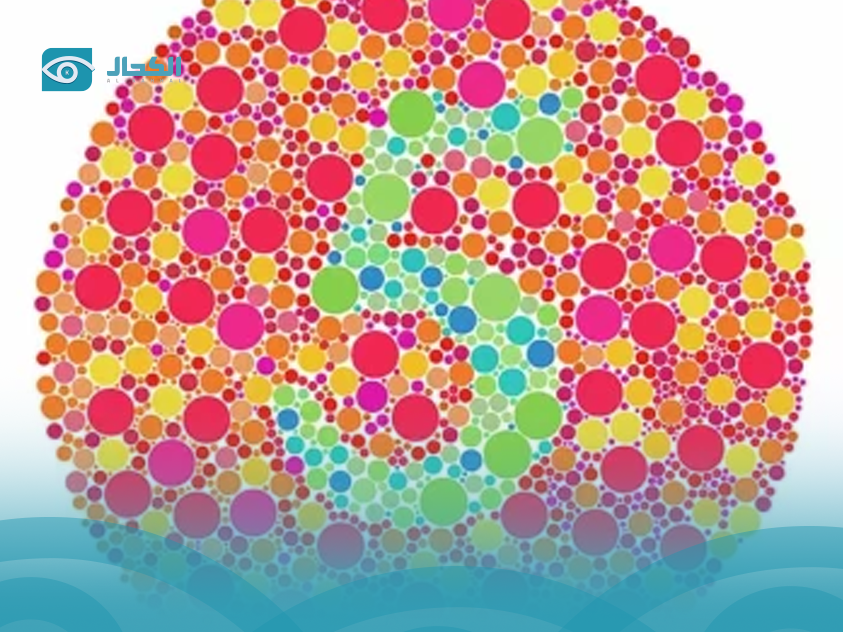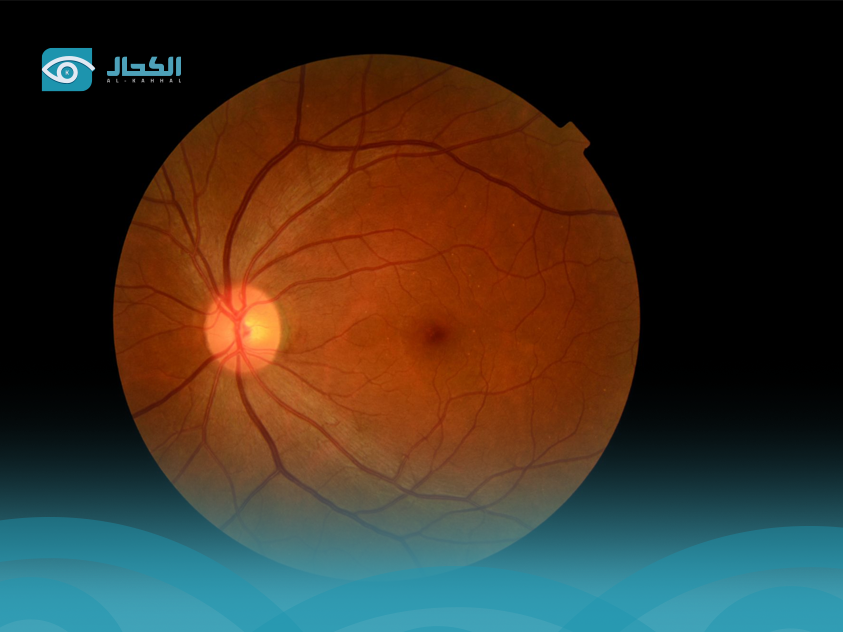
Understanding Color Blindness: Tests, Types, and Treatments
Understanding Color Blindness: Tests, Types, and Treatments

Understanding Color Blindness: Tests, Types, and Treatments
Color vision is a crucial aspect of our visual experience, allowing us to distinguish between different colors and perceive the world around us. According to the American Optometric Association, approximately 8% of Caucasian males are born with a color vision deficiency, compared to only 0.5% of females across all ethnic groups.
However, many individuals face challenges due to color blindness, which affects their ability to see and differentiate certain colors. In this article, we will explore various aspects of color vision, including:

The first step in addressing color vision deficiencies is often a color vision test. The colour vision tests are designed to determine the presence and extent of color blindness. One of the most common tests is the Ishihara test, which consists of a series of plates with colored dots that form numbers or patterns. Individuals with normal color vision can easily identify these patterns, while those with color blindness may struggle.
Types of colour vision tests
Ishihara Test: The most widely used test - particularly for detecting red-green color blindness. Research has shown that the Ishihara test is reliable, with a sensitivity of 98% for detecting red-green deficiencies.
Farnsworth-Munsell 100 Hue Test: This test assesses a person's ability to arrange colored caps in order of hue. A study found that it is effective in detecting subtle color vision deficiencies that might not be evident in simpler tests (Neitz et al., 2017).
Anomaloscope: This specialized device measures color matching abilities and is often used in clinical settings to provide a more comprehensive analysis of color vision deficiencies.
Understanding the results of a color vision test is crucial for identifying the type of color blindness a person may have and determining the best course of action for treatment.

Types of color blindness can vary significantly, with the most common forms being:
Red-Green Color Blindness: Affecting approximately 8% of men and 0.5% of women of Northern European descent. This is the most prevalent type of color blindness, and It results from the absence or malfunction of red or green cones in the retina
Blue-Yellow Color Blindness: one of types of color blindness, which is less common and occurs when the blue cones are affected. Individuals with this condition may confuse blues and yellows.
Total Color Blindness (Achromatopsia): One of the rarest types of color blindness, it is a rare condition where individuals cannot perceive any color at all.
Cone Dystrophies: These are a group of genetic disorders that affect the cone cells in the retina, leading to various forms of color blindness, often accompanied by other visual impairments.

While there is no definitive cure for inherited color blindness, advancements in color blind correction techniques have provided various solutions to improve color discrimination and visual clarity. Some of the advanced methods used nowadays in colour vision treatment:
1. Color Blind Glasses
Color blind glasses are one of the most widely recognized tools for color blind correction. These glasses are designed with specialized lenses that filter specific wavelengths of light to enhance the contrast between colors that are difficult for color-blind individuals to distinguish.
How They Work: The lenses are coated with a filter that reduces the overlap between red and green wavelengths, which is often the primary issue for those with red-green color blindness. By doing so, the glasses enhance color differentiation, allowing users to perceive colors more vividly.
2. Color Blind Contact Lenses
Color blind contact lenses offer another option for color blind correction or colour vision treatment and work similarly to color blind glasses. However, they provide a more discreet way to enhance color vision, as they are worn directly on the eye.
How They Work: These contact lenses are tinted with a special filter that enhances color contrast by blocking certain wavelengths of light. They are usually worn in one eye only to avoid disturbing the brain's natural color processing.
3. Gene Therapy for Color Blindness
Gene therapy represents a groundbreaking and potentially permanent solution for color blind correction, particularly for those with congenital color vision deficiencies. This innovative approach targets the genetic cause of color blindness by modifying the genes responsible for the malfunctioning cone cells in the eye.
How It Works: Gene therapy involves introducing a corrected version of the defective gene into the retina's cone cells, allowing the relevant cells to produce the necessary photopigments and resulting to normal vision eventually.
Limitations: While gene therapy offers long-term potential, it is not yet widely available and may not be effective for all types of color blindness.
4. Color Vision Test and Apps
While not a direct treatment, regular color vision tests and the use of color identification apps can play an important role in color blind correction and management. These tools allow individuals with color blindness to better understand their condition and learn to adapt to their environment.
A color vision test plays a crucial role in identifying both the type and severity of color blindness. One of the most widely used methods is the Ishihara test, which features a set of images made up of colored dots that form numbers or patterns. By evaluating how clearly an individual can distinguish these patterns, their degree of color blindness can be accurately assessed.
Color Identification Apps: Smartphone apps like "Color Blind Pal" or "EnChroma" assist individuals with color blindness in identifying and distinguishing colors in real time. These apps use the phone's camera to scan an object, identify its color, and provide visual cues to help users differentiate between hues. While not a correction method per se, these apps offer practical assistance in everyday tasks.
5. Education and Adaptation Strategies
Education on color blindness and environmental adaptations can serve as a non-invasive form of color blind correction.
Adaptation Techniques: Individuals can learn to associate specific objects with expected colors (e.g., knowing that the sky is blue or grass is green), or they can rely on brightness and context clues to distinguish between colors. Additionally, using labels or patterns in place of color coding can help navigate color-reliant tasks.
Workplace and Educational Support: In many cases, schools and workplaces can make accommodations for those with color blindness. For example, color-coded materials can be adapted to include labels or textures, allowing color-blind individuals to better interpret information.
Future of Color Blind Correction
As research continues to evolve, there is hope for even more effective solutions for color blindness. In particular, gene therapy holds the promise of a permanent cure, potentially revolutionizing how color blindness is treated. Additionally, advancements in augmented reality (AR) technology could lead to new wearable devices that offer real-time color blind correction in various environments.
Color vision is an essential part of our perception, and understanding color blindness can help individuals navigate their daily lives more effectively. Through various color vision tests, we can identify types of color blindness and provide appropriate color blind correction methods to enhance color perception. Continued research in gene therapy and technology is paving the way for innovative solutions, offering hope for individuals affected by color vision deficiencies.
Alkahhal Medical Clinics are at the forefront of providing advanced treatments for vision disorders, including color vision treatment. With a dedicated team of expert ophthalmologists and cutting-edge diagnostic tools, Alkahhal offers comprehensive care for individuals facing color vision deficiencies. Whether you need a detailed color vision test to identify your specific type of color blindness or innovative solutions like color blind correction glasses or contact lenses, Alkahhal is committed to enhancing your quality of life. Our clinic utilizes the latest technology and personalized treatment plans to ensure that every patient receives the best care possible. Trust Alkahhal Medical Clinics to help you see the world in vibrant color again.
Testing for color vision is usually done through specialized eye exams designed to detect color blindness with different methods such as :Farnsworth-Munsell 100 Hue Test , Ishihara Test & Anomaloscope.
Main Types of Color Blindness : Red–Green Color Blindness, Blue–Yellow Color Blindness & Complete color blindness.
glasses cannot fully correct color blindness, but special lenses can sometimes enhance color perception for certain people.
color blindness cannot be permanently corrected or cured. But there are ways to help manage it or enhance color perception such as : Color Blind Glasses, Contact Lenses, Gene Therapy & Color Vision Test and Apps